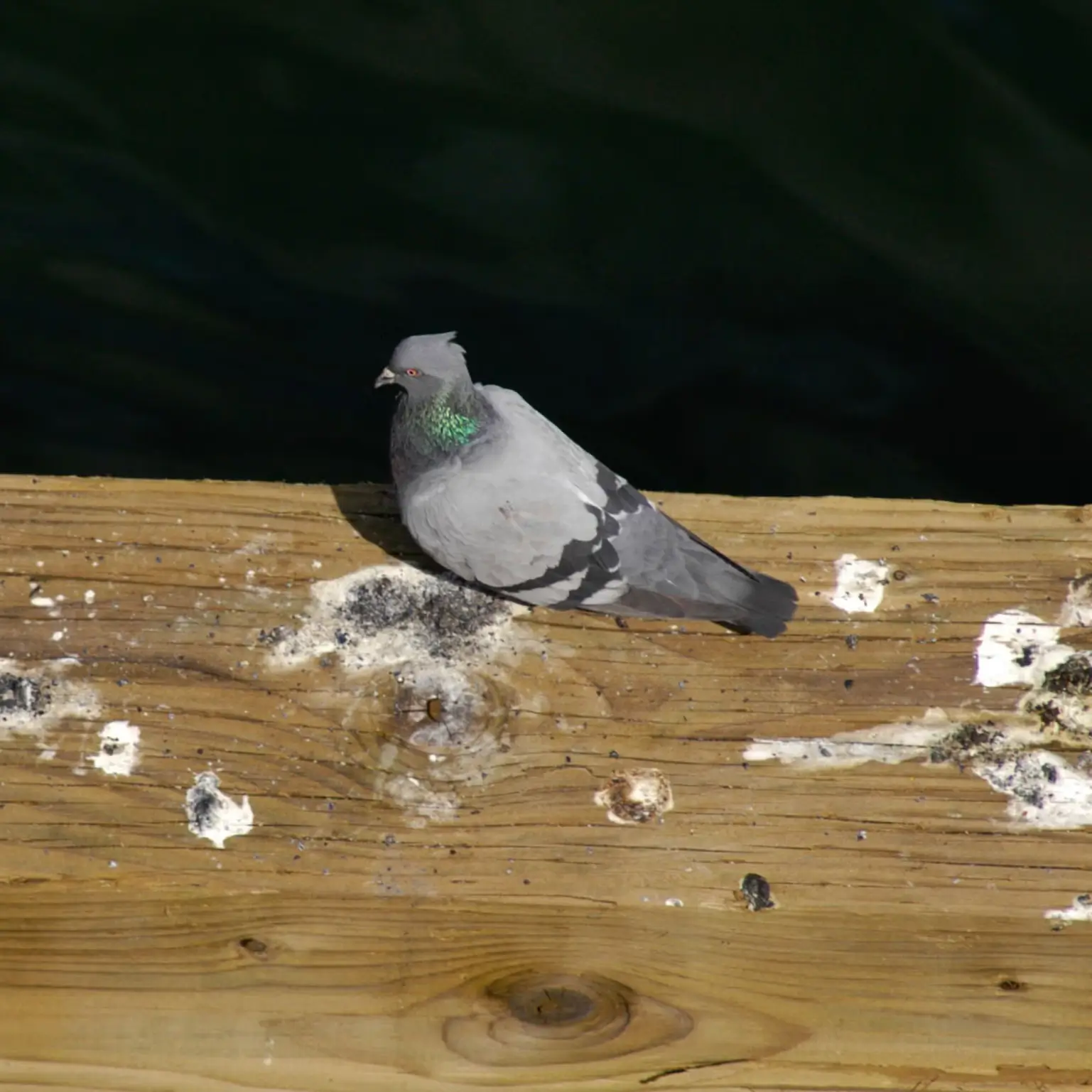Why bird dropping is harmful for us
Birds are often seen as harmless and charming, but the droppings they leave behind can pose serious risks, especially in urban areas. While a small amount of bird waste may seem insignificant, large accumulations—commonly found in city centers, near airports, rooftops, and public spaces—can lead to significant health, environmental, and structural problems. Bird droppings can carry harmful pathogens that cause respiratory diseases, trigger allergies, and spread infections like salmonella. Additionally, the acidic nature of bird waste can damage buildings, vehicles, and infrastructure, leading to costly repairs. Beyond health and property damage, bird droppings can also contaminate water sources and create slipping hazards in public spaces.
Here's why bird droppings are harmful to us:

Health Hazards
Bird droppings are more than just unsightly. They can serve as breeding grounds for various pathogens and pose serious health risks to humans. Some of the most common health issues associated with bird droppings include:
- Respiratory Diseases: Bird droppings can dry and become airborne as dust particles, which may be inhaled. This can lead to respiratory illnesses such as histoplasmosis and cryptococcosis. Both are fungal infections caused by spores found in bird feces, especially from pigeons and starlings.
- Psittacosis: Also known as "parrot fever," psittacosis is a bacterial infection that humans can contract by inhaling dust from bird droppings or handling contaminated materials. It can lead to flu-like symptoms and, in severe cases, pneumonia.
- Salmonella: Bird droppings can carry salmonella, a bacterium that can contaminate food or water supplies. Humans who ingest this bacterium may experience food poisoning, severe diarrhea, abdominal pain, and fever.
- Allergies and Asthma: Prolonged exposure to bird droppings and the mites they attract can trigger allergic reactions and exacerbate conditions such as asthma in sensitive individuals.

Structural Damage
Beyond health concerns, bird droppings can wreak havoc on buildings, vehicles, and other infrastructure. Bird waste contains high levels of uric acid, which is extremely corrosive. Over time, this acid can erode and damage various materials, including:
- Metal: Bird droppings can corrode metal surfaces like those found on bridges, statues, and outdoor machinery.
- Paintwork: The acid in bird droppings can cause permanent damage to painted surfaces, including cars, outdoor furniture, and buildings.
- Stone and Concrete: Even harder materials like stone and concrete can deteriorate under the constant exposure to acidic bird droppings, leading to structural weakening and increased maintenance costs.

Slipping Hazards
Bird droppings, especially in areas of high foot traffic, can create slippery surfaces, posing a risk of accidents. Public spaces like sidewalks, parks, and parking lots become hazardous when coated with bird feces, leading to slip-and-fall incidents that could result in injury.
Contamination of Water Sources
In areas where birds congregate near water reservoirs, bird droppings can contaminate these water supplies. This is particularly concerning for open reservoirs or rainwater collection systems. The pathogens present in bird waste can enter the water, rendering it unsafe for human consumption or agricultural use.
Aesthetic and Environmental Impact
Large accumulations of bird droppings can turn otherwise pleasant spaces into unsightly areas. Parks, monuments, and public spaces often become stained and unpleasant due to the accumulation of bird feces. Besides being visually unappealing, these droppings can also attract pests like flies and mites, creating additional problems.
In natural environments, excessive bird waste can disturb the ecological balance, particularly in areas with a high bird population. Bird droppings can lead to nutrient overloading in water bodies, resulting in eutrophication, which can cause algae blooms and harm aquatic life.
Impact on Businesses
For businesses, bird droppings can be a costly problem. Restaurants, shops, and industrial facilities may experience reduced foot traffic or sales due to the unsanitary appearance of their surroundings. Regular cleaning and maintenance due to bird droppings also add to operational expenses. In some cases, businesses may face fines from local authorities for failing to maintain hygiene standards.
How to Mitigate Bird Dropping Problems
Given the numerous dangers associated with bird droppings, it’s essential to take proactive steps to manage and prevent their accumulation. Professional bird proofing solutions, such as bird netting, bird spikes, and other deterrents, can help reduce bird nesting and roosting in problem areas. Regular cleaning, inspections, and custom bird proofing strategies tailored to specific locations can also mitigate the risks posed by bird droppings.
Conclusion
While birds contribute to the beauty of nature, their droppings can be dangerous and destructive. From health risks to property damage, bird droppings are a silent but significant threat that requires prompt attention and management. By understanding the risks and implementing effective bird proofing measures, we can protect our health, preserve our buildings, and ensure our public spaces remain safe and clean.

